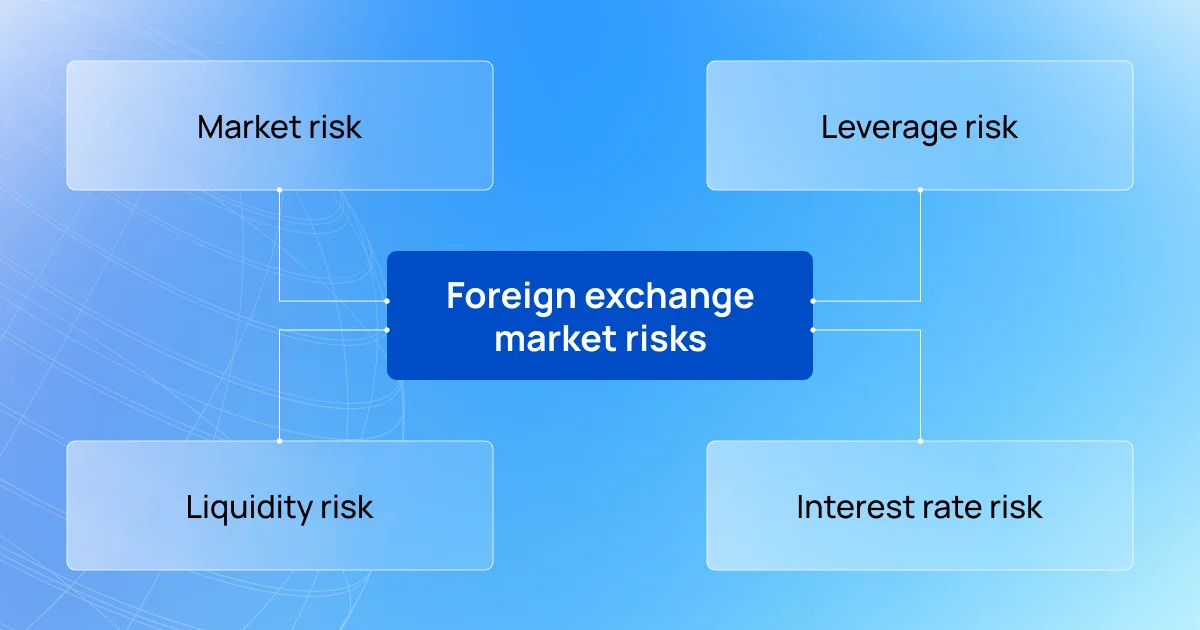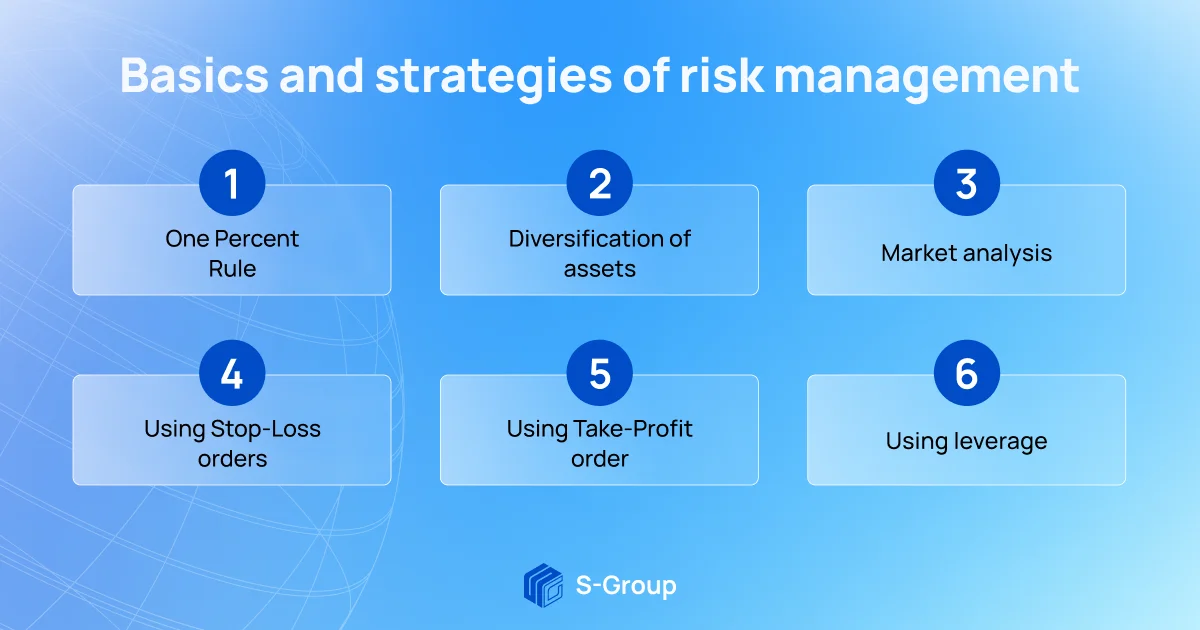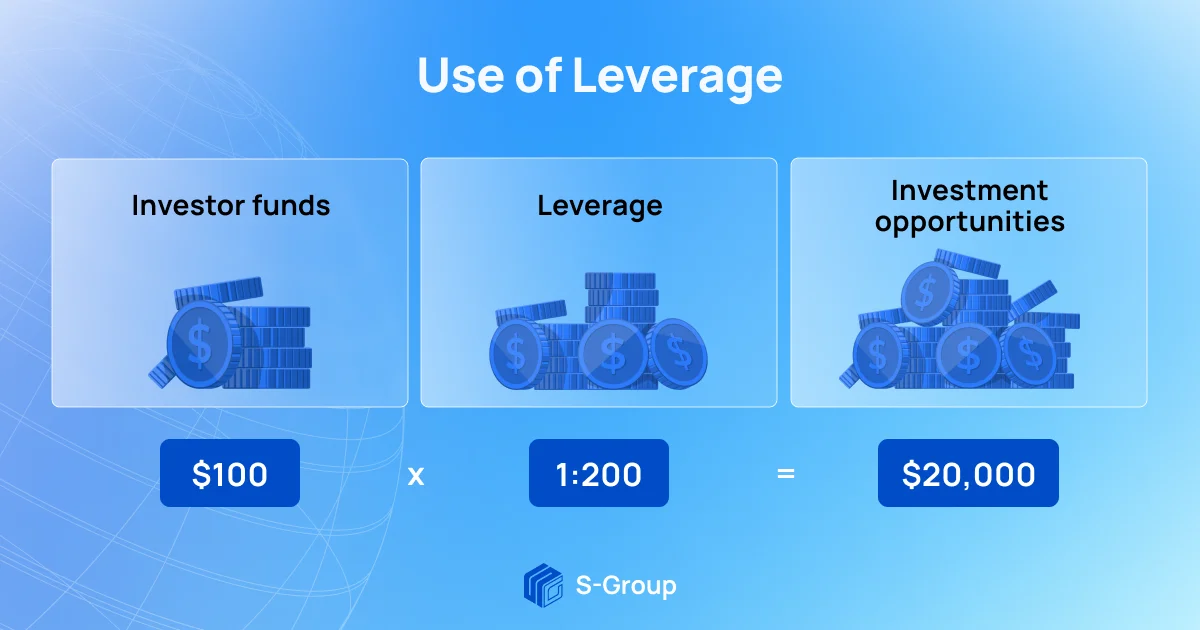What is risk management in trading?

Trading on financial markets involves not only the possibility of high profits, but also a high risk of losses. The currency market is not an exception. Forex is now one of the biggest financial networks. The amount of daily trade on it is $5 trillion, which is much more than the turnover of the stock market.
To protect yourself from losses, experienced investors use the basics of risk management, which we describe in the article.
What is risk management?
Risk management for trading is a specific set of strategies, fundamentals, and rules that an investor uses when trading on financial markets. In other words, it is a global work, which includes market analysis, monitoring of news and their influence on quotes. If we talk about the Forex market, risk management provides protection from currency risks and potential losses due to the volatility of exchange rates.
Let us have a closer look at the currency market risks which investors face.

- Market risk. It arises as a result of economic, geopolitical and other world problems, which influence the currency market. It means decrease of investment value at the expense of high fluctuations of currency rates, change of interest rate.
- Leverage Risk. Although, leverage in Forex gives you the opportunity to open positions even if your funds are insufficient. But it is important to remember that in case of failure, you can suffer high losses.
- Liquidity Risk. Currencies differ from each other by their liquidity. That is, the ability to buy and sell an asset at a bargain price at any time. Liquidity risk implies the impossibility to sell an asset at a profitable price and get income.
- Interest rate risk. The interest rate of a country's currency has a strong influence on the exchange rate. That is, the higher the interest rate, the stronger the currency. If the interest rate changes frequently, the exchange rate will also fluctuate.
The ability to correctly identify a particular risk is very significant, because it determines the choice of strategy, the assessment of risk occurrence, the scale of consequences and the potential size of losses.
Basics and Strategies of Risk Management
To protect yourself and minimize the impact of risks in the market, it is essential to understand the basics of risk management and be able to create a proper strategy.

1. One Percent Rule
This rule implies that an investor's risk tolerance is limited to 1% per trade per day. That is, if an investor has $5,000 in their account and is limited to 1%, the maximum risk per trade is $50. This rule helps the size of the risk by setting a cap on the maximum loss.
This strategy is most commonly used by traders who have less than $100,000 on their balance. And some set a risk limit of 2%. It is important to understand that as the balance income increases, so does the position. Therefore, the best option to avoid high losses is to set the limit below 2%.
2. Diversification of Assets
The previous rule of one percent is effective for market risks, but there is also the currency risk — the change in the exchange rate of the base currency. In this case, it is critical to adhere to a diversification strategy. That is, choose currency pairs from different countries, with different liquidity and popularity. In this case, a part of your investment portfolio will be protected and provide income, even if the other part “declines”.
You may also invest in derivatives, which are mostly used for hedging risks. Derivatives include CFD contracts, futures, forwards, options, etc. You can learn more about derivatives here.
Diversification helps to create a portfolio adapted to different market sentiments and to reduce risks.
3. Market analysis
An investor's analytical skills play an important role in the success of trading in the market. Spend a lot of time conducting fundamental and technical analysis of the market. Fundamental means tracking news and the economic situation in the world. Technical analysis means analyzing charts and tracking the sequence and influence of certain factors on the market.
Experienced investors advise conducting these two analyses. Only in this way you will have a complete picture of the situation on the market.
4. The use of Stop-Loss order
Stop-Loss is a market order, which allows limiting potential losses of an investor. You just need to set the limit at which the deal will be closed automatically. This order is especially useful for traders who manage several trades and cannot monitor the situation round the clock.
Even if you open only one trade risk, Stop-Loss can be effective. For example, that you want to trade CFD on Asian stocks — Toyota or Mitsubishi UFJ, but you live in Europe and you have a significant time difference. To sleep at night instead of watching your trade, you can set an order and not have to worry.
5. Using Take-Profit order
If with a Stop-Loss order, trades can be closed automatically, then Take-Profit is the price at which the trader can sell the asset and make a profit. That is, if the assets reach the set level, a sell transaction is activated, and the investor makes a profit.
6. Use of Leverage
Leverage is a useful trading tool that allows you to open large deals with relatively small investments. For example, with an investment of $100, you can open trades up to $20,000 using 200:1 leverage.

But in that case, what does leverage do in the basics of risk management? It's simple. While leverage increases your investment opportunities, it also increases your risks. The higher the leverage, the higher the risk of loss. Therefore, it should be used in moderation and thoughtfully.
Risk Management — A Great Way to Save Money
If you have made up your mind to trade and earn money on Forex, you must be prepared for the trading risk of potential losses that cannot be completely eliminated. But proper work with trade management risk can help you, if not to eliminate risks completely, then to minimize them substantially.
Share
Interesting
Would you like to receive a digest of articles?
One email with the best articles of the week.
Sign up so you don't miss anything.